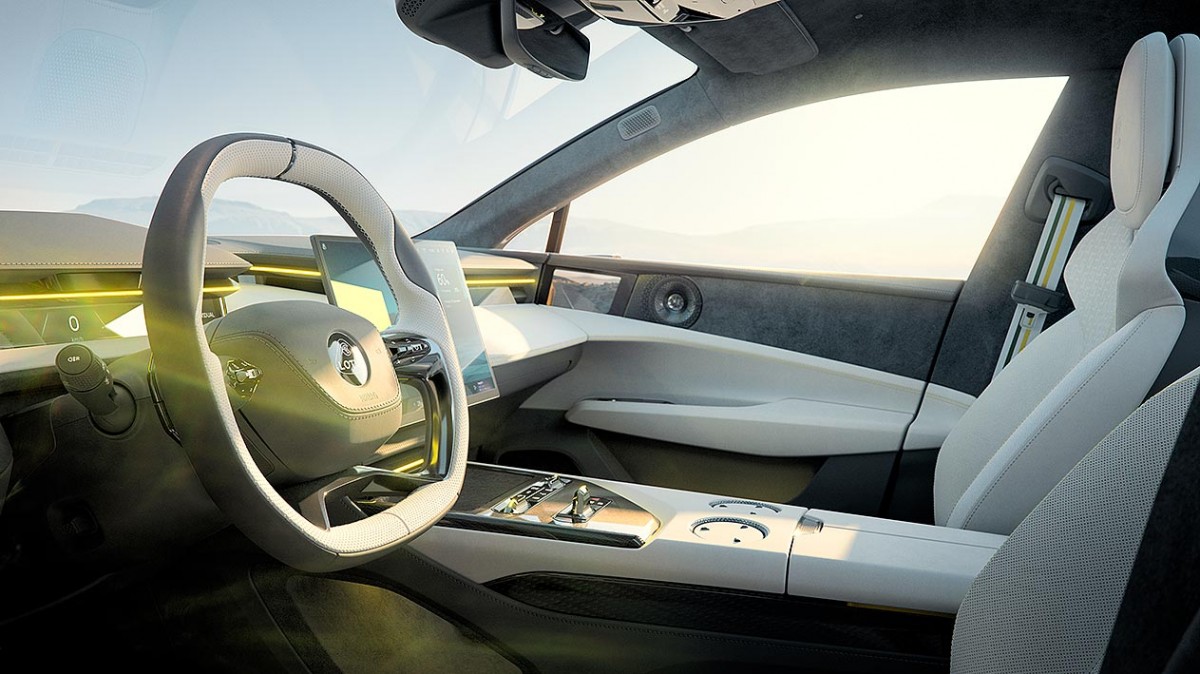Lotus Emeya pricing for UK and EU revealed
Lotus, the brand synonymous with lightweight, agile sports cars, has thrown its hat into the electrified hyper-GT ring with the Emeya. It arrives amidst a flurry of promises – blistering performance, surprising practicality, luxurious tech, and the potential to rewrite what an electric grand tourer can be. Lotus hopes that this is a turning point for the company as it finally unveils the car and its prices in the UK and EU markets.
There's no denying the headline figures are attention-grabbing. Lotus claims up to 905 horsepower, a sub-2.8-second sprint to 62 mph for the Emeya R, and a range of up to 379 miles on the WLTP cycle. These are undoubtedly impressive stats. Still, raw power doesn't always equal a thrilling driving experience. Lotus engineers were given a task to translate this battery-powered punch into the soul-stirring, visceral handling their internal combustion cars are known for. No pressure.

Then there's the practicality angle. With a spacious boot and the promise of fast-charging capability, Lotus wants us to believe this electric GT can handle more than just weekend joyrides. It's a bold claim for a segment typically focused on raw performance rather than grocery runs. A practical supercar from Lotus is the world's first, two words that we could never imagine sitting comfortably next to each other in one sentence.
The Emeya's biggest hurdle might be its hefty price tag. Starting from £94,950 in the UK (€106,400 in Europe) for the standard Emeya and going all the way to a staggering £129,950 (€150,990) for the Emeya R model, it demands a serious financial commitment. Sweet spot in the middle, the Emeya S, is priced at £107,450 and €126,950 respectively. That’s a lot of money but the likes of Lucid Air, Tesla Model S and Mercedes EQS aren’t exactly cheaper.

Lotus is banking on tech and luxury to justify the premium. There's the augmented reality heads-up display, adaptive suspension, massaging seats, and even AI-powered route planning. Individually, these features sound great, but the real test is how seamlessly they work together. Remember, a long list of fancy tech features doesn't always translate to a user-friendly experience – a lesson many luxury automakers still struggle with.
Lotus's heritage is a double-edged sword for the Emeya. Fans expect a level of driver engagement and purity of feedback that has defined the brand for decades. Weight becomes a major concern here – those batteries aren't going to be light. Lotus has its work cut out to mask the inevitable extra kilos or risk the Emeya driving like a numbed-down version of its legendary siblings.

The company leans heavily on promises of advanced suspension tech and drive modes, but the proof will be in real-world handling. This isn’t Lotus' first foray into the EV world though, and judging by the success of the Eletre SUV, the company has a few tricks up its sleeve and some of the best know-how of the industry, when it comes to handling.
The Lotus Emeya has the potential to be an EV disruptor if it can deliver on its bold claims. Yes, translating power, features, and hypothetical practicality into a visceral driving experience worthy of the Lotus badge is the biggest unknown at the moment. But by the same token - this is Lotus. It may no longer be the same British company of yesteryear, but this actually can be an advantage. It has a bolder vision than ever, owners with deep pockets, and a performance-driven team of engineers who are hell-bent on delivering the next level of fun driving experience - in an electric package.
Reader comments
- Fearghast
- ps1
Everyone? Buddy, no one cares. If you think 5 bots on forums are indicative of some public opinion, you are way off.
- Notoday
- pXC
Everyone saying Xiaomi is copy Porsche...but nobody tslk about Lotus copying Lamborghini. Yeah...





Facebook
Twitter
Instagram
RSS
Settings
Log in I forgot my password Sign up